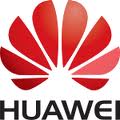 Recently, Indian telecom conglomerate Airtel, launched India’s first Mobile Application Store, ‘Airtel Application Central’. Though, it was said to transform the basic phone to Smartphone, initial hype surrounding the Mobile Application Store’s launch hasn’t done much for the operator. In fact, many users aren’t yet aware of the launch and rests are little aware of the theories behind mobile application store. We are here to take a glimpse!
Recently, Indian telecom conglomerate Airtel, launched India’s first Mobile Application Store, ‘Airtel Application Central’. Though, it was said to transform the basic phone to Smartphone, initial hype surrounding the Mobile Application Store’s launch hasn’t done much for the operator. In fact, many users aren’t yet aware of the launch and rests are little aware of the theories behind mobile application store. We are here to take a glimpse!
Let the dust settle down first. Some of the key players like Apple with its AppleStore are dominating the mobile application space for quite some time now. Then we have got, ‘ Android Market’, an application store for Android Users. Even Ericsson & Nokia aren’t far behind. And the latest one to join will be ‘Wholesale Application Community’, a consortium of 24 leading mobile operators (including Vodafone etc), who will be hoping to challenge Apple, in mobile application market. Airtel is the first to launch mobile application store, in India and we are likely to see many more in coming months. But real question remains unanswered; why everyone is rushing to launch MAS now? Is it a gimmick to heavenly ARPU figures or sought after customer loyalty? Or is it something else?
We have carried out quick scan of ‘Airtel’s Application Central’. While, I got some feedbacks that none of the applications are worthwhile, we dismiss the foul cry behind the non-availability of great applications in Airtel’s store. We hope, you could find it somewhere else (AppleStore/Android Market). The store has more than 1250 applications for download (starting at a very reasonable price Rs 5/-) across 550+ devices, as claimed in the press release. But the real reason to cheer about such application store is its Indian flavor/need (badly missing in Android Market at least), as reported by Airtel Direct:
Customers can choose from India Specific Apps – religion and devotional Apps such as Ayyappa the God to Bhakti ki Shakti where our customers can express their devotion to Maa Durga to Qibla which allows our customers to calculate the direction from anywhere on the globe to the holy city of Mecca. Old local favorites such as Book Cricket and Gilli Danda stage a comeback in a Mobile Avatar along with other Games and Apps around popular festivals such as Holi, Diwali, etc
According to latest report by ABIResearch, the mobile application download will reach the mark of five billion by the end of 2014. The reason, wider smartphone adaptation which saw sales rise 20{af589cdba9d77786c8c861317dbad60bba1e2ebbf56e2ffab874a1b59fde9ce3} in 2009, along with opening of application stores by many telecom players, as mentioned above. But then can we, India ride on this wave?
Certainly, there are some added advantages in launch. Some of them are listed below:
- Create differentiation in market.
- Offer good Value Added Services to subscribers.
- Keeping price tag over application download helps in improving revenue margins, which may help in improving ARPU too.
- May add up to customer loyalty towards operator/brand.
- May pave way for next generation services, which are soon to launch in India (3G/BWA) etc.
But then are they enough for operators like Airtel to tie a permanent knot with subscriber? Will it add up to improved QoS indexes? What will happen when every other player in the segment starts offering its services too?
We need to have perspective. Apple & Nokia are device players, who are diverging to offer services over their devices via application store, irrespective of carriers. Google’s Android Market is shot in arm towards AppleStore, by an Internet giant, which is in line to its ‘Mobile Central’ strategy and hoping for wider adaptation of its flagship mobile OS on different hardware vendor platforms. It’s predicted that Android’s market share will rise to 23{af589cdba9d77786c8c861317dbad60bba1e2ebbf56e2ffab874a1b59fde9ce3} in 2014 from existing 11{af589cdba9d77786c8c861317dbad60bba1e2ebbf56e2ffab874a1b59fde9ce3}. Where does mobile operator fit into this ecosystem of MAS?
There are key differences. While Ericsson’s Application Store is positioning itself as model of revenue sharing between developer, carrier & Ericsson itself, which is similar to that of Alcatel-Lucent’s model of AppLabs, Nokia prefers to sell its application directly to end users. On the other end, Apple allows to take 70{af589cdba9d77786c8c861317dbad60bba1e2ebbf56e2ffab874a1b59fde9ce3} of the revenue of sale of application to developer and rest to itself, there’s little for carrier to cheer about. This is altogether different to Android market’s strategy of selling application on Android. What model Airtel prefers to have?
There is great need for development of open standard by telecom operators, to combat dominance device store like those of Apples’ (Wholesale Application Community may be called as such attempt). GSMA’s OpenAPI is good start, but lots need to be done. Then telcos like Airtel need to create, sustain & support environment for development of applications on mobile platform. Airtel’s earlier initiatives, like AODC & Innovation Fund were welcome steps towards making of such ecosystem for mobile application development in India. Telcos have got added advantage to it. They are already in the field of offering services to customers and they know well the ABCs of services. This proximity to subscribers may prove vital in getting feedback and developing newer applications, while sustaining the growth. Another valid point comes from the fact that, Airtel’s application store is independent of devices support (over 550 devices supported), but it maintains the fact that, subscriber has to tie up with Airtel to use application store. Which is opposite in case of Nokia/Apple’s application store, where you can chose your carrier but not the device.
Telecom operators in India have already seen huge ARPU degradation in last decade. Also there’s enough competition in market to sustain growth. Airtel’s mobile application store will mark the start of new era in Indian telecom industry. At first, it mayn’t garner big bucks for operator, with the advent of NGN, the picture will change drastically. The language barrier is also one of the concerns in gaining popularity for MAS. And soon, when every other operator will launch its MAS, we may get to see price fall of applications, which may lead to greater tariff wars over applications and their stores. Till then, we hope to see the mobile application development ecosystem growing strongly, certainly with blessings of telcos. What should telcos expect from you? A little patience, lots of hope and loyalty towards them! Choice is yours!
Have I mentioned about ‘Having a Killer Application in Kitty?’





